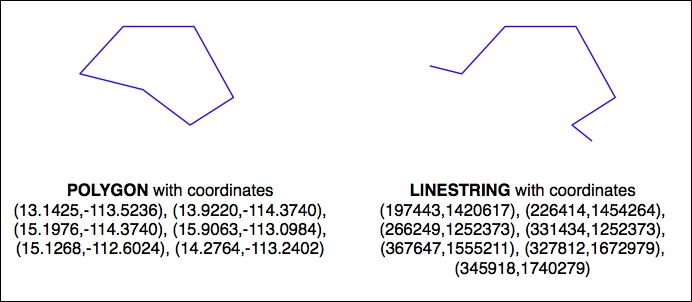In this section, we will look at a number of practical things you can do to ensure that your geospatial databases work as efficiently and effectively as possible.
As we've seen in earlier chapters, different sets of geospatial data use different coordinate systems, datums, and projections. Consider, for example, the following two geometry objects:

The geometries are represented as a series of coordinates, which are nothing more than numbers. By themselves, these numbers aren't particularly useful—you need to position these coordinates onto the earth's surface by identifying the
spatial reference (coordinate system, datum, and projection) used by the geometry. In this case, the Polygon is using unprojected lat/long coordinates in the WGS84 datum, while the LineString is using coordinates defined in meters using the UTM zone 12N projection. Once you know the spatial reference, you can place the two...



